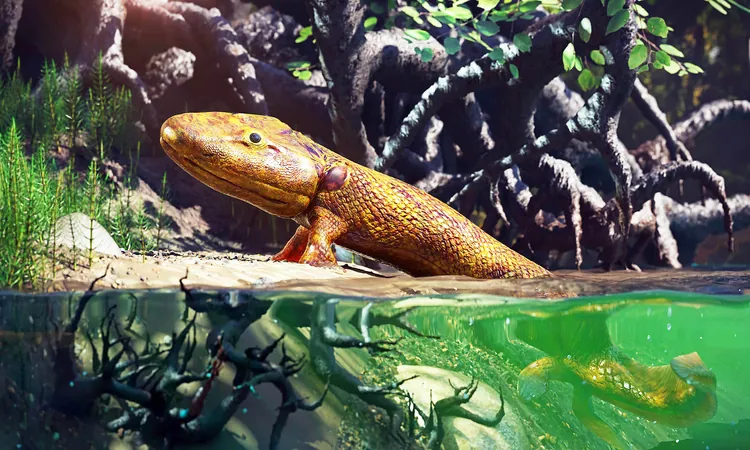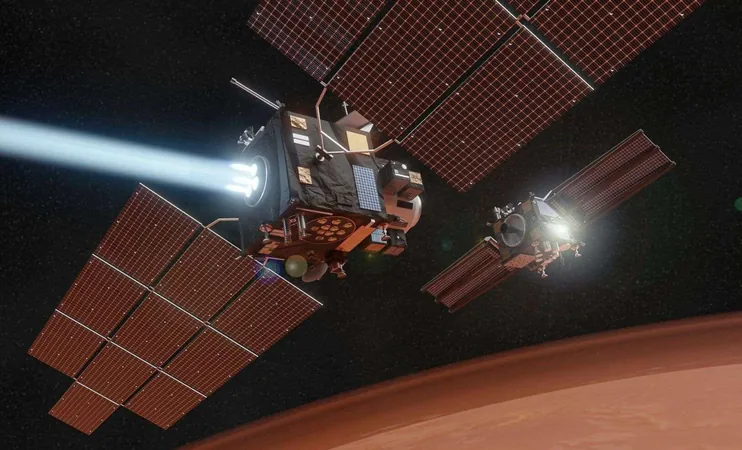
The Ancient Fish That Paved the Way for Life on Land
2025-04-30
Author: Ling
A Glimpse into Earth’s Evolutionary Past
Approximately 375 million years ago, primordial streams and tidal flats were home to strange creatures that resembled fish but were poised to take their first steps onto land. Among these trailblazers was Tiktaalik roseae, a remarkable fish that combined fins with early limb-like structures and boasted a unique flat head designed for scouting above the water's surface.
Fossil Discoveries Unravel Evolutionary Secrets
Tiktaalik's well-preserved fossils, unearthed from Arctic rock formations, are invaluable for understanding the pivotal transition from aquatic to terrestrial life. Recent advanced scans of a specimen reveal groundbreaking insights into how this fish's anatomy laid the foundation for life on land.
Anatomical Innovations Beneath the Surface
Instead of an unvaried line of vertebrae typical of fish, Tiktaalik's spine features specialized sections that highlight its evolutionary journey. The robust rear ribs, designed to support a body partially lifted from the water, suggest that the basic framework for walking was already forming while it still relied on fins for movement.
Pioneering Research Techniques
Led by Tom Stewart at Penn State, scientists utilized cutting-edge microcomputed tomography scans to meticulously uncover Tiktaalik's skeletal structure. This non-invasive technique allowed researchers to reveal intricate details of the bones, essential for reconstructing its anatomy and exploring its movement.
A Unique Blend of Traits
Tiktaalik stands out as a fascinating example of transitional anatomy. Its rib structure hints at the possibility of a ligament connection to the pelvis, indicating an evolutionary step towards terrestrial locomotion. While Tiktaalik likely couldn’t walk in the same way later land animals could, it possessed the ability to raise itself and push against the substrate.
Insights into Ancient Movements
The recent findings align well with other Devonian fossils, such as Acanthostega and Ichthyostega, which had already begun to develop limbs while still predominantly aquatic. Tiktaalik provides a crucial snapshot in this lineage, revealing that the adaptations for life on land began evolving while its ancestors still swam.
Connecting Past and Present
Understanding how Tiktaalik interacted with its environment leaves a lasting impact on how we view evolutionary processes. As biologists examine each small adaptation, they uncover the gradual innovations that allowed life to thrive on land. This transition from fins to limbs underscores the intricate tapestry of evolution.
The Influence of Ancient Anatomy on Modern Technology
This research not only enriches our knowledge of evolutionary biology but also has potential implications for modern robotics. By examining the anatomy of ancient creatures like Tiktaalik, engineers may glean insights for designing more efficient, nature-inspired robotic limbs.
Why This Matters Today
Tiktaalik serves as a vivid reminder of the small but significant changes over eons that culminate in revolutionary advancements like walking. Every tilt, twist, or modification in its structure nudged its descendants closer to thriving on solid ground. So next time you skip a stone or wade through a creek, remember that a fish once hoisted itself to gaze above the water—a moment that threads humanity’s story to a long-lost era.
The full study is available in the Proceedings of the National Academy of Sciences.




 Brasil (PT)
Brasil (PT)
 Canada (EN)
Canada (EN)
 Chile (ES)
Chile (ES)
 Česko (CS)
Česko (CS)
 대한민국 (KO)
대한민국 (KO)
 España (ES)
España (ES)
 France (FR)
France (FR)
 Hong Kong (EN)
Hong Kong (EN)
 Italia (IT)
Italia (IT)
 日本 (JA)
日本 (JA)
 Magyarország (HU)
Magyarország (HU)
 Norge (NO)
Norge (NO)
 Polska (PL)
Polska (PL)
 Schweiz (DE)
Schweiz (DE)
 Singapore (EN)
Singapore (EN)
 Sverige (SV)
Sverige (SV)
 Suomi (FI)
Suomi (FI)
 Türkiye (TR)
Türkiye (TR)
 الإمارات العربية المتحدة (AR)
الإمارات العربية المتحدة (AR)